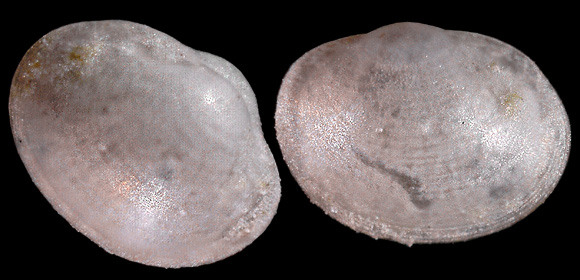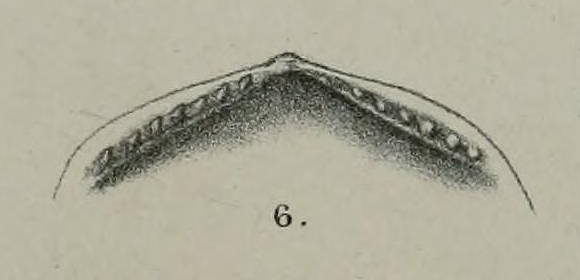
400m deep, in mud, off Capraia Island, Northern Tyrrhenian Sea, W. Italy. 0,8mm.
« Picolissima specie, liscia, lucida, trasparente, cornea, tumida con un lato subtroncato. » – T. A. di Monterosato: Silicula tumidula in “Conchiglie della zona degli abissi”, Bull. Soc. Malacologica Italiana vol. VI, Pisa 1880, via BHL.

« Shell roundish-oval, equilateral, somewhat compressed, remarkably solid for its size, opaque and glossy. Sculpture: numerous and close-set concentric and very fine microscopic striae, which cover the whole shell. Colour whitish. Margins rounded on every side, except at the back so far as the continuity is interrupted by the beaks, contracted in front . Beaks central, but not prominent. » – J. G. Jeffreys: “On the Mollusca procured during the ‘Lightning’ and ‘Porcupine’ expeditions 1868-1870. (Part II), Proceedings of the Zoological Society of London for the year 1879, London 1879, p.580-581.
500m deep, in mud, off Capraia Island. 0,9mm.

« Cartilage and pit very small, somewhat elongated transversely. Hinge-plate rather broad and strong. Teeth minute and short, tubercular, 6-8 on each side. Inside polished, plain-edged. Scars indistinct. » – Ibid.